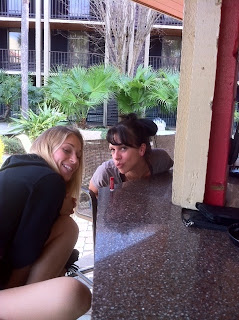The indigenous Bundjalung people of eastern Australia use “tea trees” as a traditional medicine by inhaling the oils from the crushed leaves to treat coughs and colds. They also sprinkle leaves on wounds, after which a poultice is applied. In addition, tea tree leaves are soaked to make an infusion to treat sore throats or skin ailments.[2][3]
Use of the oil itself, as opposed to the unextracted plant material, did not become common practice until researcher Arthur Penfold published the first reports of its antimicrobial activity in a series of papers in the 1920s and 1930s. In evaluating the antimicrobial activity of M. alternifolia, tea tree oil was rated as 11 times more active than phenol.[4]
The commercial tea tree oil industry was born after the medicinal properties of the oil were first reported by Penfold in the 1920s. It was produced from natural bush stands of M. alternifolia that produced oil with the appropriate chemotype. The plant material was hand cut and often distilled on the spot in makeshift, mobile, wood-fired bush stills.
Production ebbed after World War II, as demand for the oil declined, presumably due to the development of effective antibiotics and the waning image of natural products. Interest in the oil was rekindled in the 1970s as part of the general renaissance of interest in natural products. Commercial plantations were established in the 1970s and 1980s, which led to mechanization and large-scale production of a consistent essential oil product.[5]
Among over 98 compounds contained in the oil, terpinen-4-ol is responsible for most of the antimicrobial activity.[6]
Although tea tree oil normally is extracted from Melaleuca alternifolia commercially, it can also be extracted from Melaleuca dissitiflora and Melaleuca linariifolia. Tea tree oil is defined by international standard ISO 4730 (2004) ("Oil of Melaleuca, Terpinen-4-ol type"), which specifies levels of 15 components which are needed to define the oil as "tea tree oil."
| Component | Concentration |
|---|---|
| terpinen-4-ol | 30–48% |
| γ-terpinene | 10–28% |
| α-terpinene | 5–13% |
| 1,8-Cineole | 0–15% |
| α-terpinolene | 1.5–5% |
| α-terpineol | 1.5–8% |
| α-pinene | 1–6% |
| p-cymene | 0.5–8% |
Tea tree oil has been scientifically investigated only recently. Some sources suggest beneficial medical properties when applied topically, including antiviral,[7] antibacterial, antifungal, and antiseptic qualities. It also has beneficial cosmetic properties.[8]
Tea tree oil is active against Staphylococcus aureus, including MRSA.[9] Tea tree oil is less successful for application in the nose.[10] Also, there is clinical evidence that topical dermatological preparations containing tea tree oil may be more effective than conventional antibiotics in preventing transmission of CA-MRSA.[11]
Recent studies support a role for the topical application of tea tree oil in skin care and for the treatment of various diseases and conditions. Tea tree oil appears to be effective against bacteria, viruses, fungal infections, mites such as scabies, and lice such as head lice. A 2008 study of in vitro toxicity showed a tea tree oil preparation was more effective against head lice than permethrin, a popular pharmaceutical remedy.[12]
In the treatment of moderate common acne, topical application of 5% tea tree oil has shown an effect comparable to 5%. benzoyl peroxide Albeit with slower onset of action, patients who use tea tree oil experience less side effects than those that use benzoyl peroxide treatments. [13]








